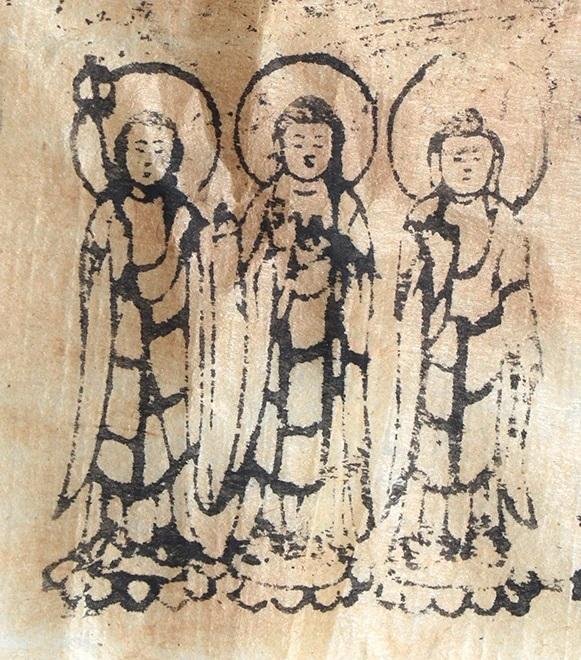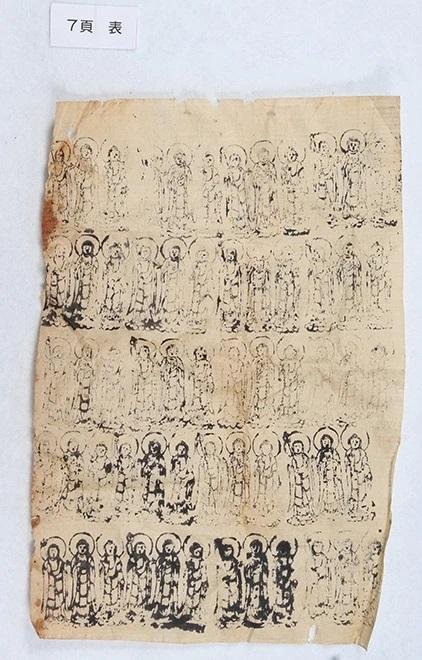The carved head of an ancient Buddhist statue kept at the Myooin temple in Fukuyama, Japan, has exposed layers of traditional “washi” paper adorned with images of revered religious figures.

The revelation occurred during the dismantling of the Maitreya statue, an important cultural asset designated by Hiroshima Prefecture, for repair work.
The temple, affiliated with the Shingon sect of Buddhism, houses a wooden seated statue that serves as the principal object of worship. Believed to have been created around 1348, the statue was delivered to Myooin to commemorate the completion of the five-storied pagoda erected during the Northern and Southern Dynasties period. This pagoda, with national treasure status, has been a focal point of veneration for 676 years.
The sheets of washi paper uncovered during the summer dismantling depict intricate ink images of Buddha, Bhaisajyaguru (Yakushi Nyorai), and Ksitigarbha (Jizo Bosatsu). The images, created with seal stamps, cover almost every inch of space on the traditional Japanese paper, which has a history spanning over a millennium.

Fukuyama city’s cultural promotion division revealed that the sheets of paper come in three types. The first set comprises ten sheets of washi, each measuring 23 centimeters by 16 cm, bound together with a paper string. Each sheet bears numerous stamps featuring ink images of the three religious figures standing side by side—an uncommon occurrence where three figures are incorporated into a single seal simultaneously.
The second set consists of smaller sheets of paper imprinted with Buddhist images, while the third set is a single piece of paper displaying both a Buddhist pattern and characters. Experts note that the three figures represented Buddha, Bhaisajyaguru, and Ksitigarbha.
The Myooin Temple, founded in 807 by Kobo Daishi (also known as Kukai), a renowned Japanese Buddhist monk and calligrapher, has been a custodian of this remarkable statue for centuries.

The delicate sheets of washi paper, carefully removed to prevent further deterioration, have sparked anticipation that their examination will offer insights into the circumstances surrounding the construction of the wooden pagoda. Researchers and temple officials believe that the seated statue, now undergoing repair, holds clues to the artistic and spiritual practices of the past.

In an interview with the Fukuyama Cultural Support Division, a representative emphasized the rarity of incorporating three distinct figures into a single seal, describing it as an unusual aspect of the inked Buddha images. The representative stated, “The three represent the three worlds of the past, the present, and the future.”
As this news spreads, the global recognition of washi paper, highlighted by UNESCO in 2014 as an intangible cultural heritage of humanity, takes center stage.


































